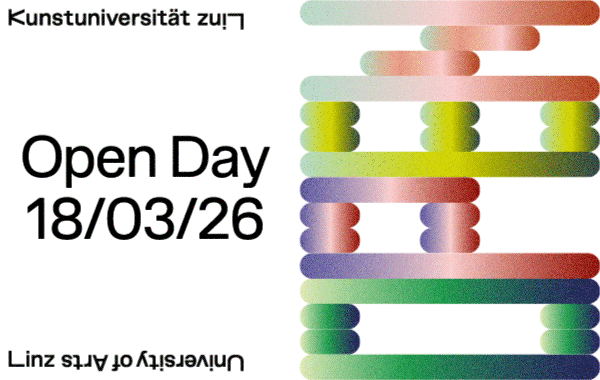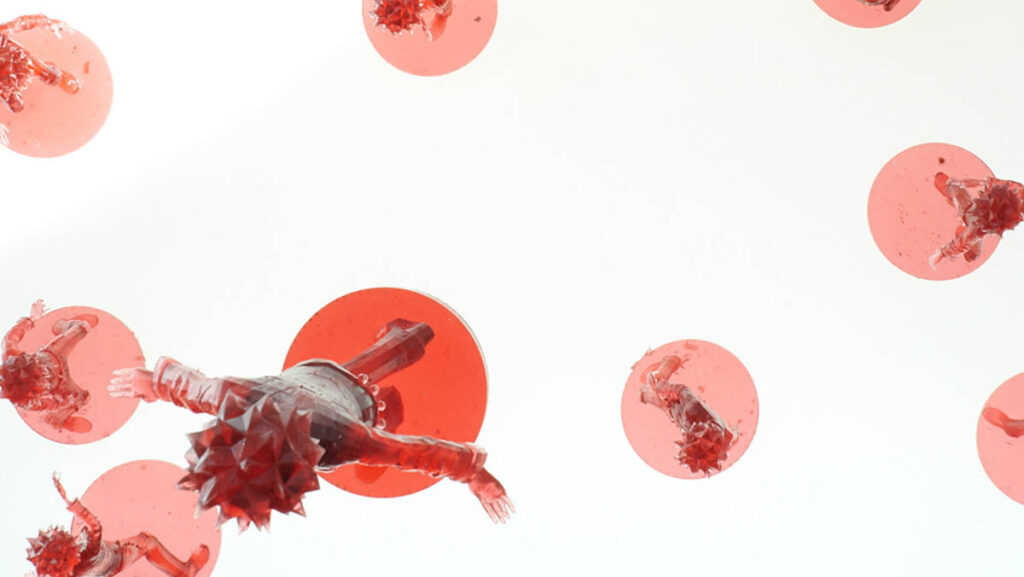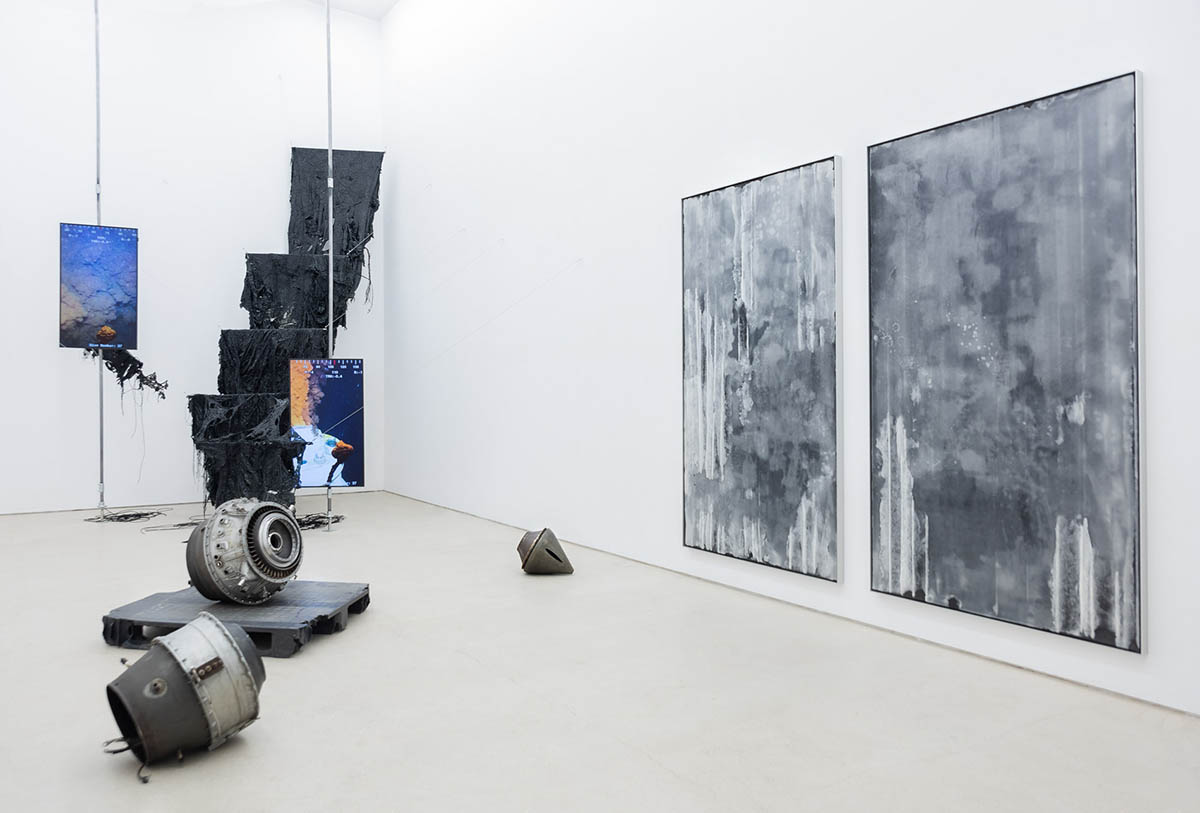
“The end of the world has already occurred,” writes Timothy Morton, and despite the horrifying message of the fact that we are facing an ecological catastrophe, notions such as “world,”
“nature,” and “environment” have ceased to be a significant backdrop against which human action unfolds. Once seen as mere footprints, our actions now resonate through the non-human world, forming traces that persist and evolve—what Morton calls the “hyperobject” and what Jane Bennett recognizes as the pulsing vitality of matter itself. Within the exhibition, these interrelations are explored through material agency, collapsing distinctions between life and nonlife, creation and destruction. Drawing on Karen Barad’s theory of intra-action, agency thus is not individually owned but emerges from relational entanglements.
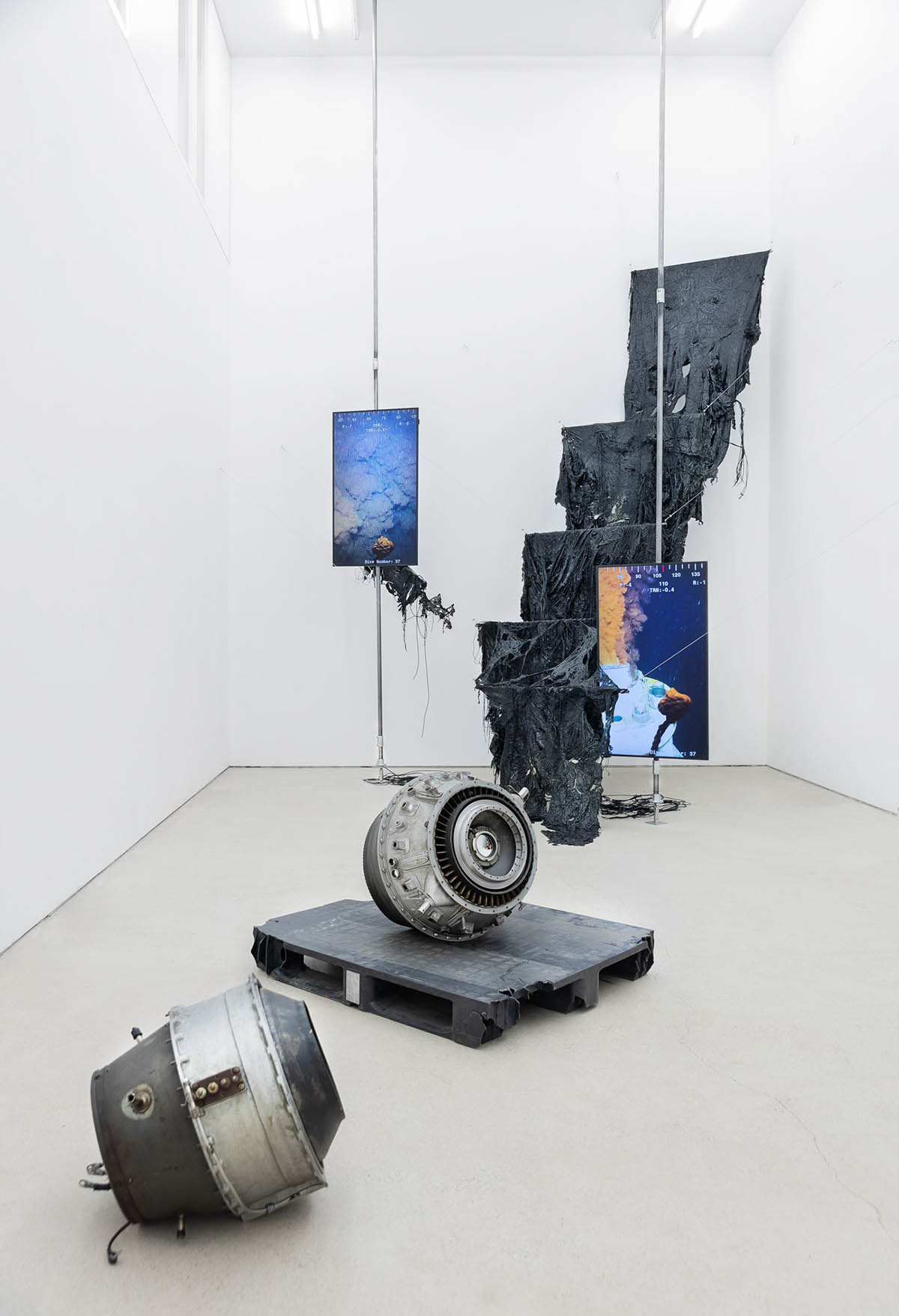
In his artistic practice and research, Daniel Hölzl (*1994, AT) explores the cyclical nature of matter through mostly site-specific installations. Matter here is never static but caught in periods of decay and renewal. Working primarily with recycled and locally sourced materials, the pieces engage with the material traces of extraction economies and their entanglement in broader temporal scales. Rather than illustrating ecological concerns, the works themselves perform a kind of material thinking, foregrounding the liveliness of matter and its entwinement with human and non-human forces alike.
Grounded Tarmac No. One & Two (2022) expand these concerns through a material language shaped by recycled carbon fiber and recycled paraffin wax— two substances intimately tied to the infrastructures of aviation and the petrochemical industry. The sculptural assemblages trace the afterlives of technologies that once symbolized human aspiration and velocity—geopolitics, ecological crisis, and industrial history collide by echoing the entanglements between military innovation and extractive economies. Questioning the legacy of flight in an age marked by planetary precarity, these pieces, beneath their abstract forces, evoke a deep ambivalence. Hovering between model and memorial, they invite the viewer to reimagine the ground, not as a limit, but as a condition for renewal, asking what a future beyond oil might look like, and what forms of material groundedness it might require.
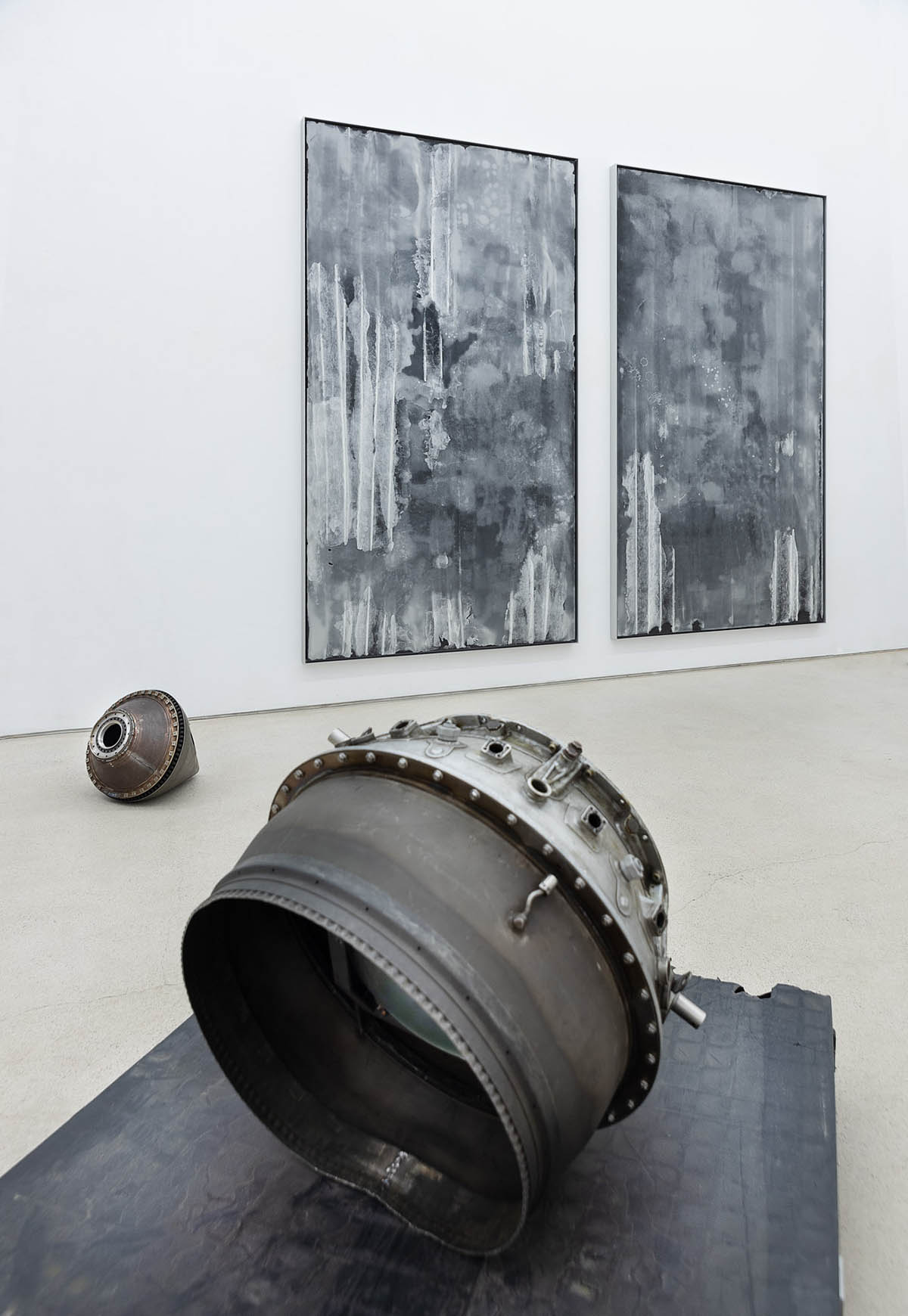
Through process-oriented investigations, Kaja Clara Joo (*1991, AT/KR) engages with discourses on new materialism, probing the imbrications between bodies, matter, and technological mediation. Her sculptural and time-based works confront anthropocentric modes of seeing, asking how violent human intrusions into geological or social spaces materialize in both the environment and collective memory. Central to her practice is an inquiry into how imaging apparatuses—historical, technical, and political—generate shared knowledge and cultural artifacts.
In Ruffian Dancers (2023-2025), Joo investigates the interdependencies of labor, material, and visual culture. Drawing from archival footage of oil rig workers—historically referred to as
„roughnecks“—the work juxtaposes sculptural forms with moving image fragments to examine how extractive labor leaves traces across both human and non-human landscapes. The installation she creates can be seen as speculative markers of an environment shaped by repetitive gestures, industrial rhythm, and the wear of material exhaustion. Rather than idealizing labor or mourning its disappearance, Joo’s work explores how historical and environmental residues persist in form and movement. By layering tactile materiality with video loops, Ruffian Dancers constructs a hybrid space where the physical, the archival, and the speculative intersect.
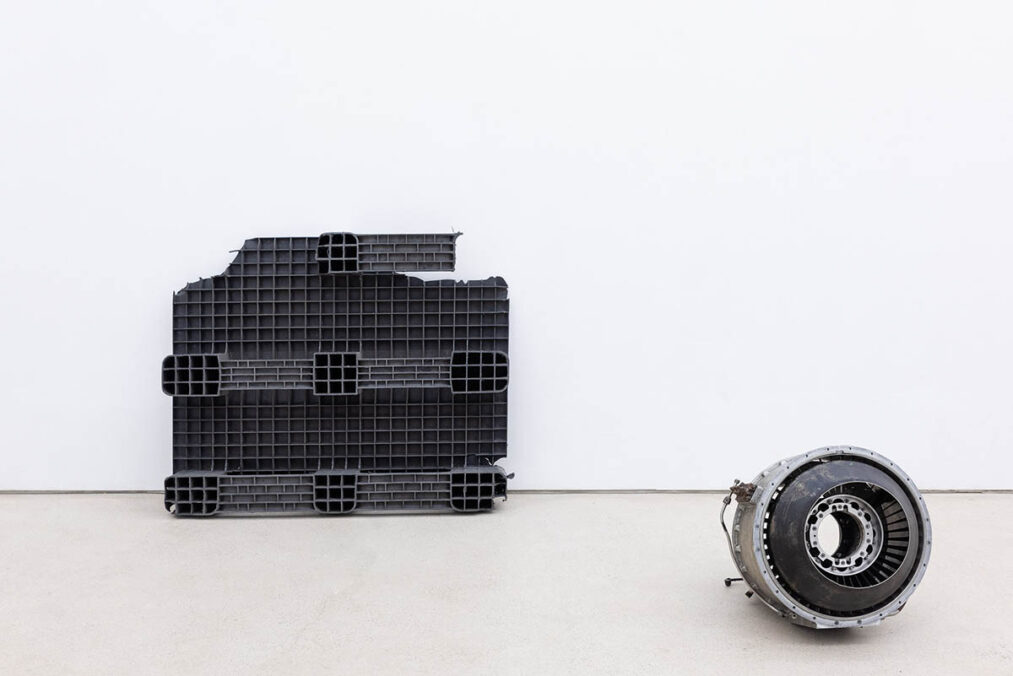
Mona Schulzek (*1992, DE) explores the intersections of art and science through a cosmological lens, approaching art as a universal language—one that carries a kind of embodied knowledge resistant to scientific quantification. Her work operates within a speculative field in which the human is placed with nonhuman temporalities and the vast, unknowable dimensions of the cosmos. Rather than understanding “environment” as limited to terrestrial nature, Schulzek redefines it as a cosmic ecology that exceeds planetary boundaries. In this expanded field, her sculptural works—composed of earthly and extraterrestrial materials—invoke both the primordial and the post-anthropocentric. They suggest an archaeology not of the past, but of speculative futures and possible interstellar encounters.
In Chamber II, Chamber III, and Chamber IV (2025), Schulzek continues her exploration of posthuman materiality. The works resemble relics of unknown origin: sculptural capsules one of them embedded with a spherical mirror that expands and distorts the viewer’s field of perception. The objects’ ambiguity evoke parallels to ‘Oumuamua, the first known interstellar object to pass through our solar system—a formation whose unusual trajectory and composition challenged scientific models and sparked speculative theories, from cosmic debris to artificial origin. Like ‘Oumuamua, the Chambers resist classification: is it a technological fossil, a message from the future, or a fiction disguised as evidence?
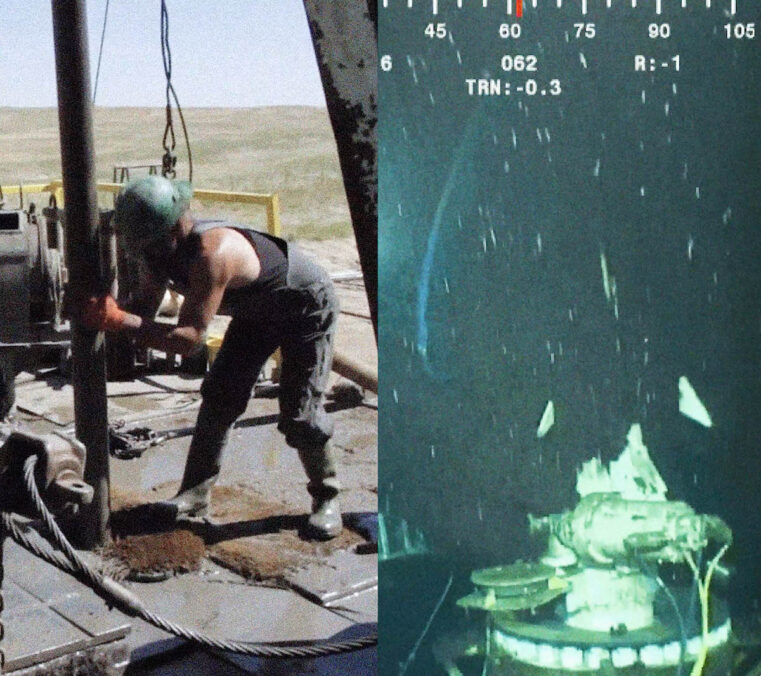
Blending these artistic perspectives, the exhibition invites viewers to reconsider their role in the ongoing transformation of the world, not as passive observers but as active participants in its reshaping. Here, time fractures. It loops, ripples, and collapses, refusing the orderly march of progress. The Anthropocene becomes a space of contradiction, where destruction and creation coexist, where the weight of human history tangles with the resistance of non-human forces. Casting Currents is not an exhibition about solutions. It does not claim clarity, nor does it offer redemption. Instead, it drags viewers into a liquid state of being, a sandbox where the narratives of agency, time, and matter are rewritten. In the fluid ambiguity of the exhibition, boundaries dissolve, and what remains is an uncanny mirror reflecting both the debris of the past and the emergent possibilities of the future.
Exhibition: Casting Currents curated by Livia Klein
Artists: Daniel Hölzl, Kaja Clara Joo, Mona Schulzek
Exhibition duration: 06–26.06.2025
Finnisage and Artist Talk: 26.06.2025 / 6 pm
Venue: M10, Marienstraße 10, 10117 Berlin



